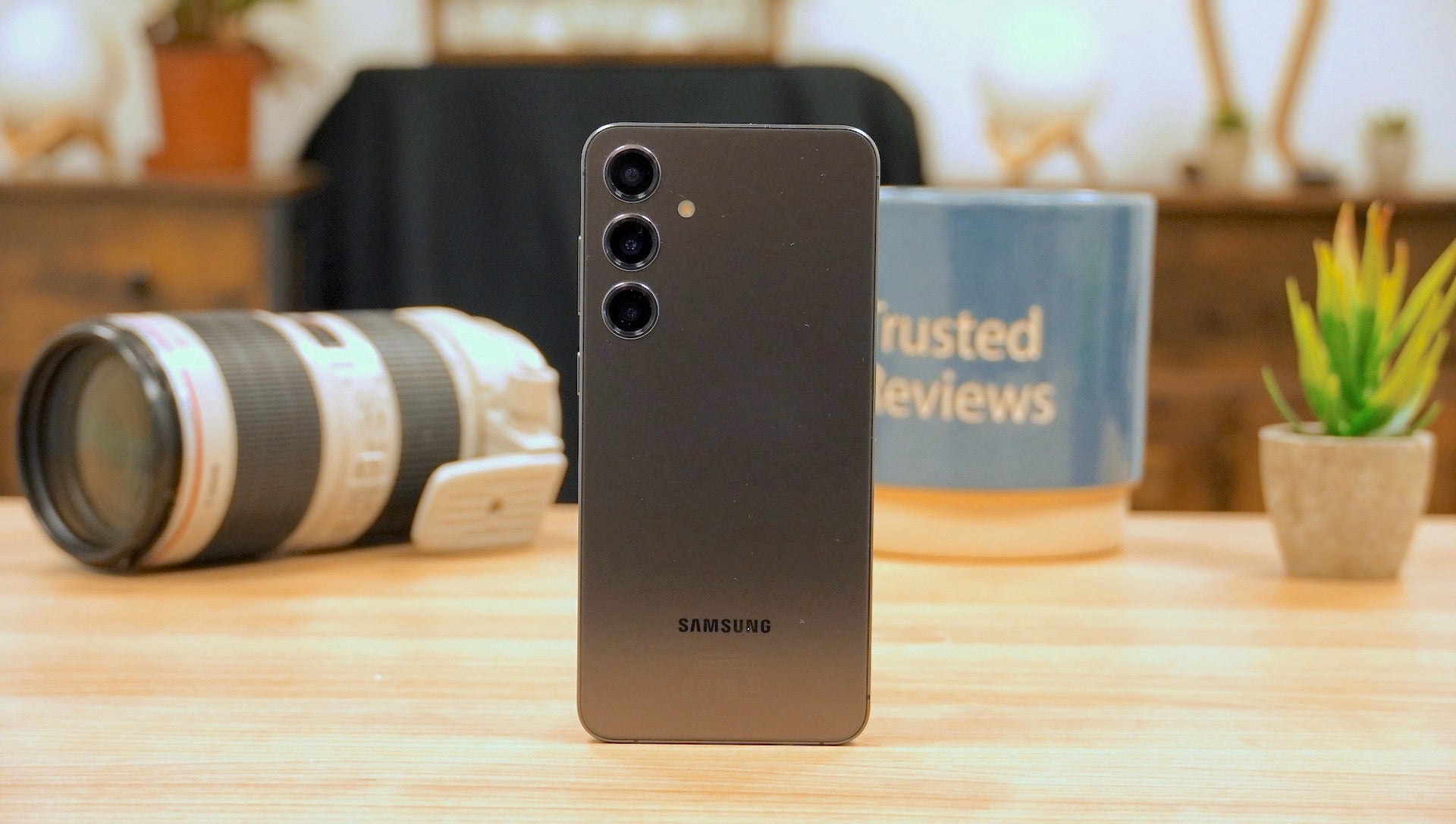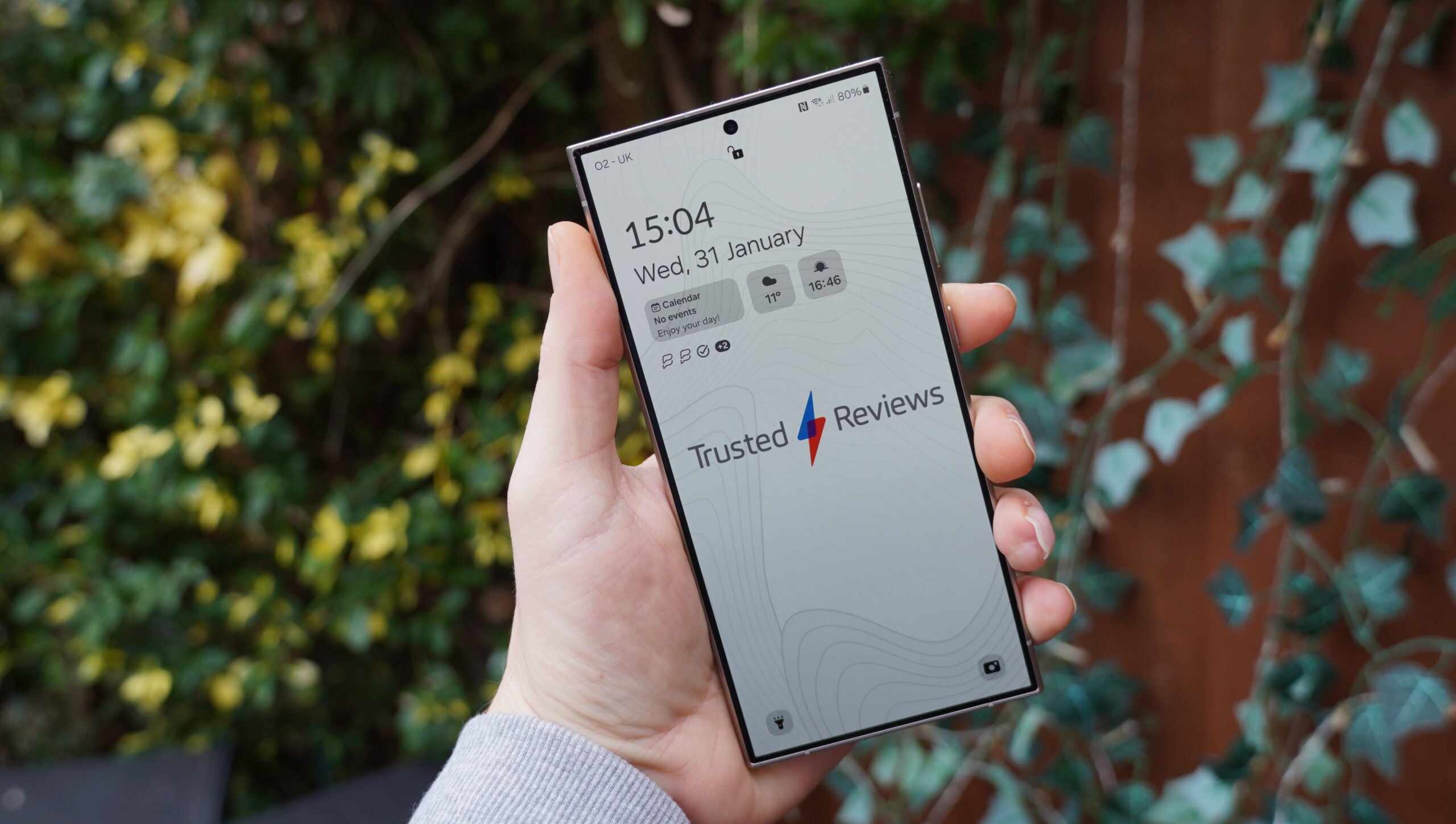Samsung Galaxy S24 Review
The best small Android phone isn't without its sacrifices





Verdict
The Samsung Galaxy S24 is a good all-round Android phone. I love the small size, it has a good screen, and it performs admirably. It’s a shame then that Galaxy AI needs time to develop and the lack of camera advances halts this from being the compact superstar it really should be.
Pros
- One of a few powerful, small Android phones
- Pricing makes more sense than the Plus
- Some clever AI features
Cons
- The camera should have been overhauled
- Areas like battery life and charging lack notable upgrades
Key Features
- New GenAI-powered featuresFrom handy new photo editing features to the ability to automatically transcribe, translate and summarise meetings, Samsung has gone big on GenAI with the Galaxy S24.
- Slimmer bezels and a larger screenSamsung has shrunk the bezels of the S24 so much that it actually increased the screen size by 0.1 inches to 6.2 inches without much change to the overall dimensions of the phone.
- Pocket-friendly designEven with a slightly larger display than its predecessor, the Galaxy S24 remains one of remarkably few small-screen phones that offer a high-end smartphone experience.
Introduction
After spending a few weeks with the Samsung Galaxy S24 one thing is very clear – this is one of the best small Android phones on the market.
Something equally clear is that Samsung really would prefer you to spend more and get the Galaxy S24 Ultra. That’s the 2024 release from the brand that truly packs everything you’d want from a high-end device.
Compared to the true Samsung flagship, the £799/$799 Galaxy S24 (and its larger £999/$999 Galaxy S24 Plus sibling) lacks true hardware innovation, putting a lot of pressure on the Galaxy AI software to make this phone feel new.
Design
- Disappointingly dull colour choices
- Pocketable size
- It has a similar look to the S23
The easiest way to describe the Samsung Galaxy S24 is that it looks very much like an iPhone 15. The flat, aluminium sides with rounded edges and a flat back are very reminiscent of Apple’s flagship device and the two phones feel very similar in hand too. This isn’t a dig at Samsung, it just would have been nice to have a phone with a little individuality.
What sets the Galaxy S24 out from the rest of the Android phone market is that this is a smaller device. It’s not ‘Mini’ by any means, but it’s dinkier than the Pixel 8 and on par with the iPhone 15. It also stays this size without sacrificing too many features, as I’ll get into later.
At 168g it’s incredibly light and it’s one of few flagship-level devices that can be used – by many – with one hand.
The overall design is also very similar to the Galaxy S23, with only a handful of changes setting the two phones apart. Like the Plus-variant, the smaller S24 ekes the screen size up this year – from 6.1 inches to 6.2 inches. It does this by shaving some thickness out of the bezel, leaving the phone roughly with the same dimensions as before. A bigger screen in a body the same size is always a bonus.
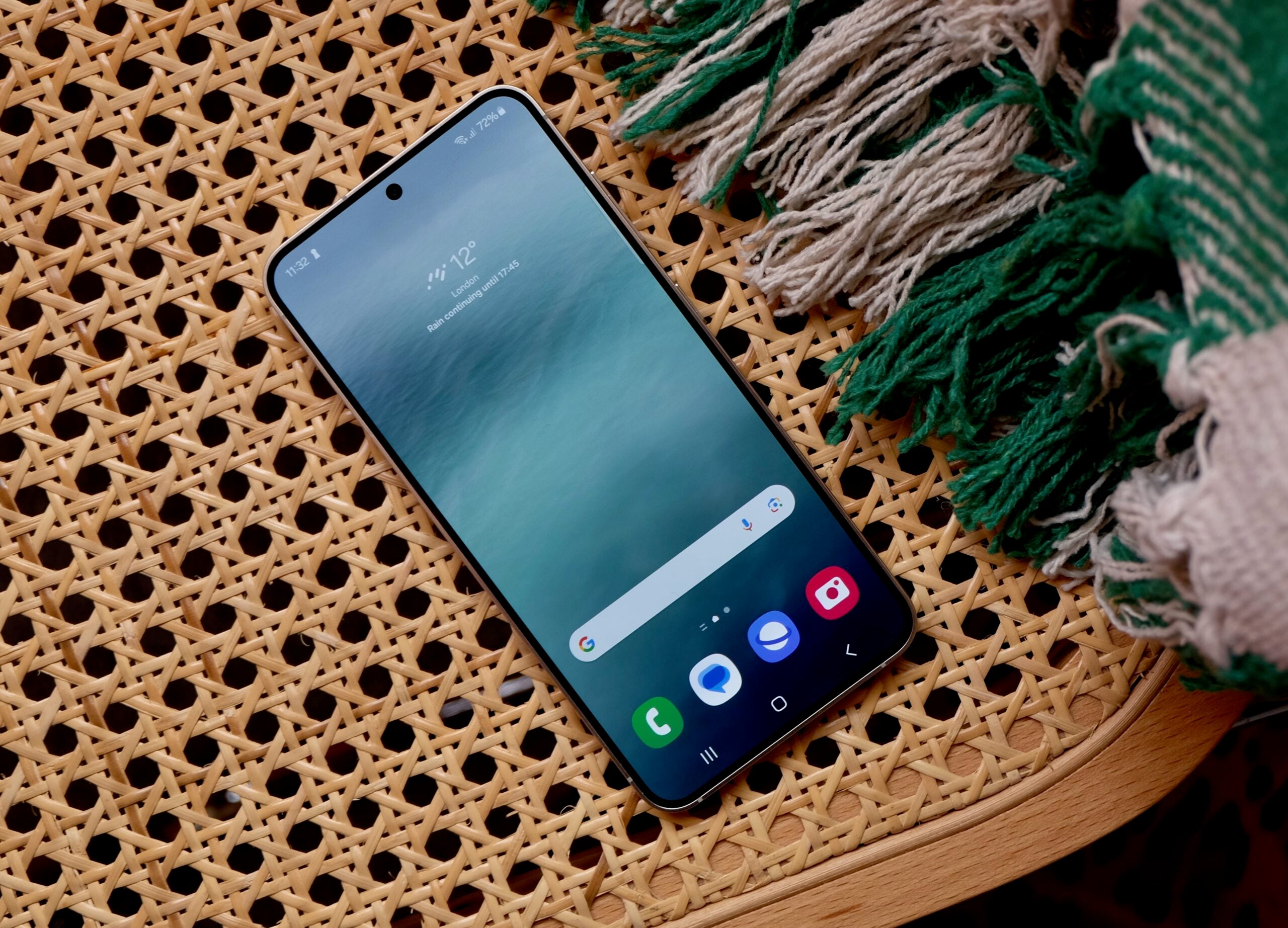
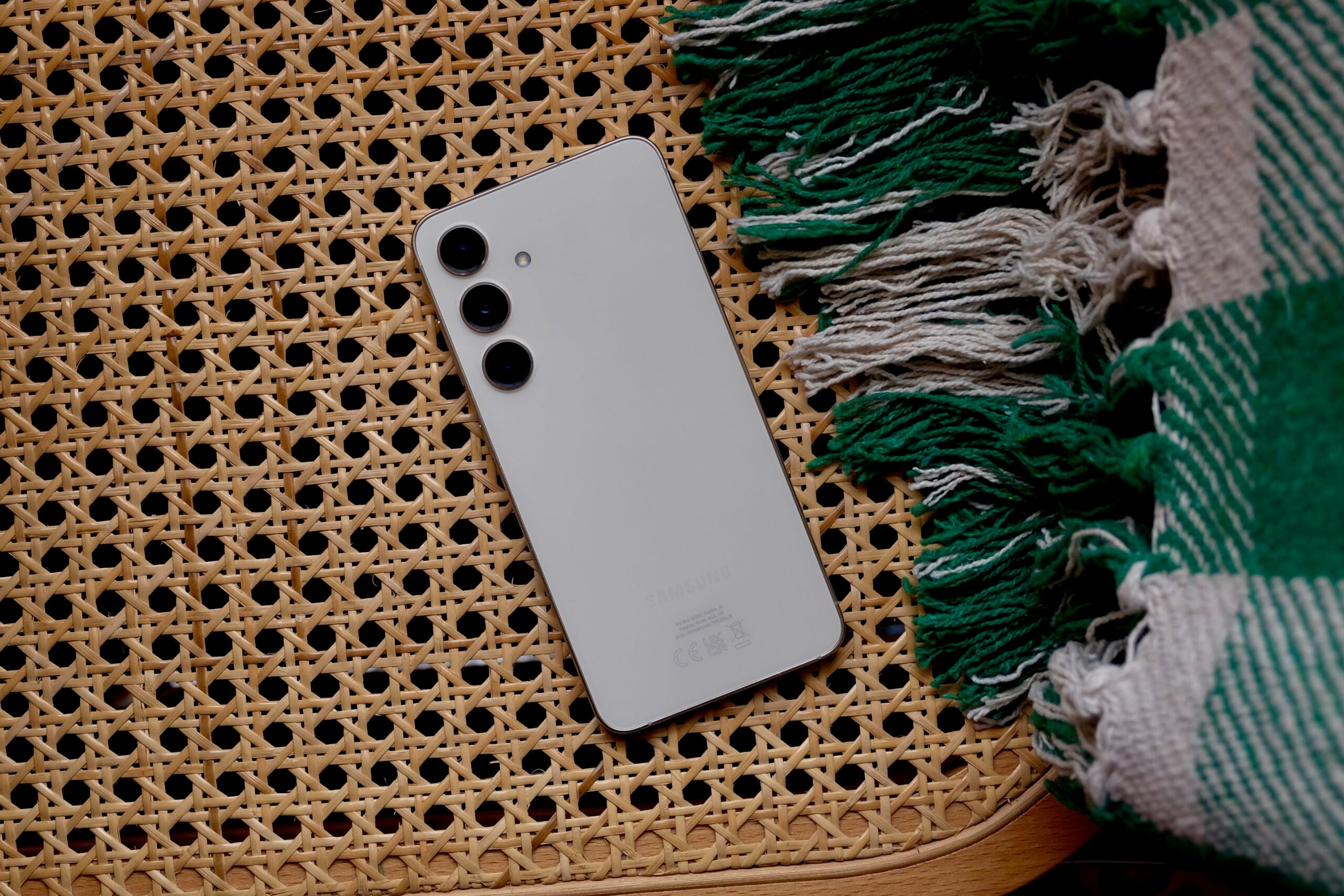
When it comes to the colour choices, the Galaxy S24 disappoints. That is unless you’re shopping via the brand’s online store where the range of three exclusive hues are far more tasteful.
The standard range comes in four colours: a very mild yellow (you can see that in the photos accompanying this review), violet, plus standard black and grey options. The colour palette isn’t quite as dull as the S24 Ultra, but they lack punch and fail to stand out. Samsung’s store is offering a sapphire blue, jade green and dusty sandstone orange as a trio of exclusive colours and these three look far nicer.
While the colours aren’t to my taste, the feel of the phone is. The back is matte, which is excellent at reducing marks and fingerprints, and the sides have a soft finish that makes it a pleasure to hold.
Samsung moved from aluminium to titanium with the flagship Galaxy S24 Ultra, but that move didn’t trickle down the range. Both the S24 and S24 Plus stick with Samsung’s Armor Aluminium, which is now said to be 17% stronger than the version used on the S23. Whether that’s the case or not is hard to say with certainty, but just as Lewis mentioned in his Samsung Galaxy S24 Plus review, the smaller version is also surprisingly durable. A few drops during the review period left no visible scratches or dings.
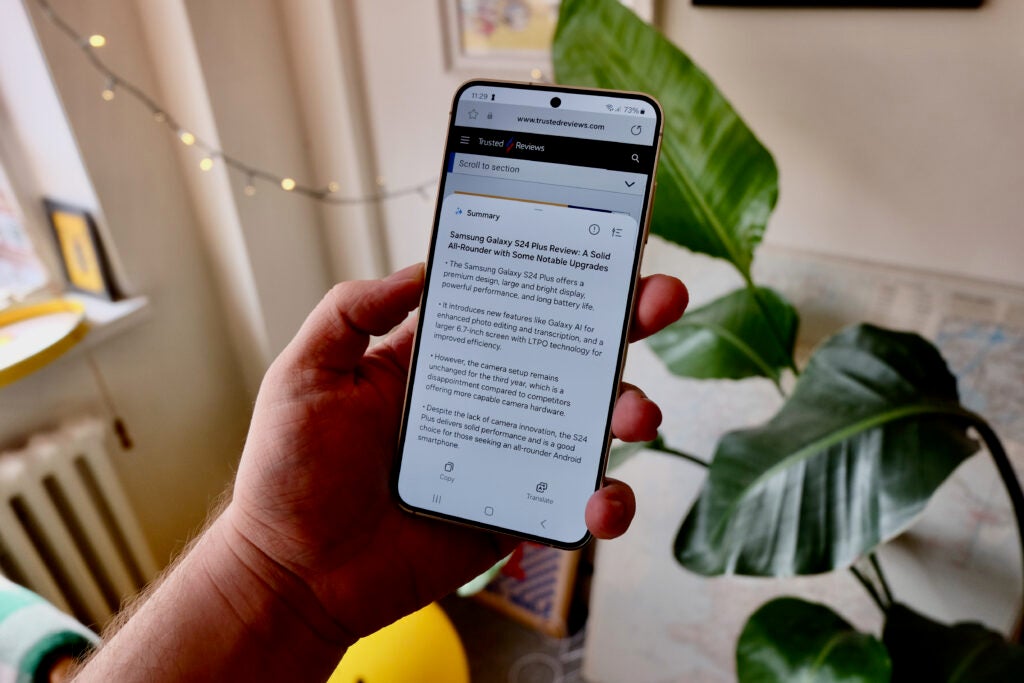
I am not in the slightest bit fussed that Samsung hasn’t switched to titanium here. When Apple moved to the material it made complete sense, as it allowed them to bring the weight of its very heavy Pro phones down. With the S24 Ultra, the material changed but the weight stayed very much the same. And as the S24 and S24 Plus remain light anyway, it would have likely added cost for very minimal benefit.
There is a good amount of recycled material used throughout. Samsung used recycled cobalt and steel in the speakers and battery respectively and the packaging is completely free of single-use plastic.
Screen
- The lowest resolution screen in the S24 range
- LTPO finally arrives
- Bright enough
Continuing the theme of minor updates over its predecessor, the screen on the S24 comes with a few welcome tweaks – although none of them are what I would call ‘upgrade worthy’.
The biggest change is an upgrade to a fully-featured LTPO display, allowing the refresh rate to move between 1Hz and 120Hz. This has been a feature on the Ultra series – along with much of the competition – for a few years now, but this is the first time it features across the whole S-series line.
As the screen can now refresh at more speeds, it can save battery when idle and it ramps up quickly to ensure each swipe and scroll is as smooth as possible.
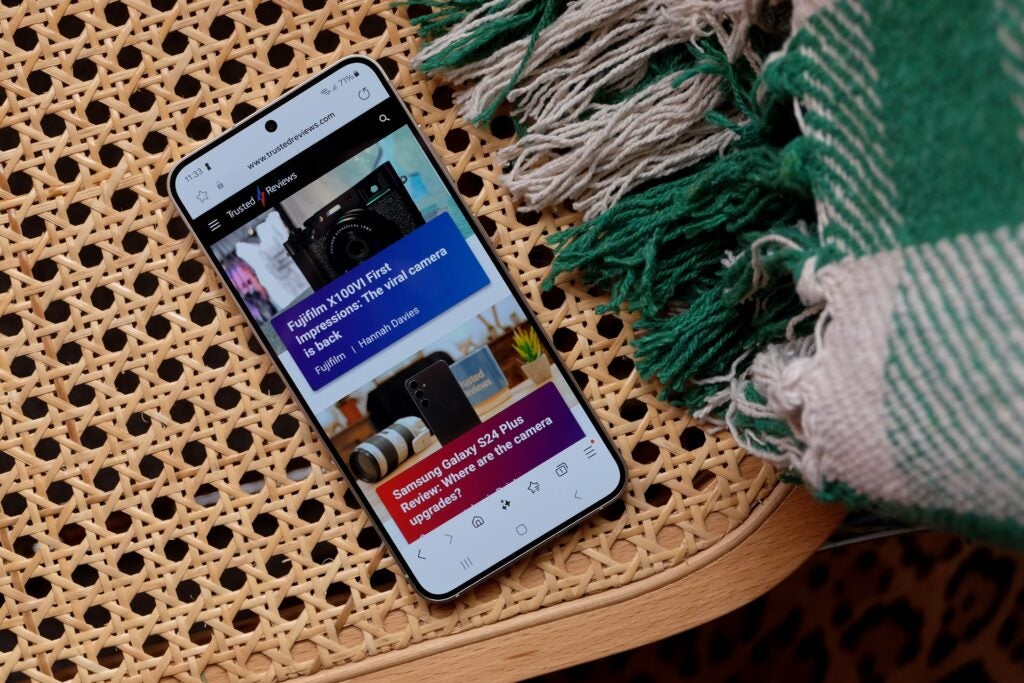
The AMOLED 2X display here is slightly bigger (6.2 as opposed to 6.1-inch) than it was on the S23 and the bezel is thinner and more uniform. Small changes yes, but it does make for an overall better experience.
One notable difference between the S24 and S24 Plus is that the latter has a QHD+ resolution, while the smaller model has a lower FHD+ version. This isn’t a huge issue in actual use as the smaller panel still looks sharp and detailed with fewer pixels.
Dolby Vision HDR support isn’t anywhere to be seen – normal for Samsung – so HDR10+ is here instead which isn’t as widely supported on mobile streaming apps. HDR content does look great though, thanks to a high peak brightness of 2600 nits. There’s enough brightness for easy outdoor visibility too and Samsung’s software does a good job of automatically pushing the brightness even further when required.
Camera
- Three rear cameras, none of which offer many upgrades over the S23
- The main 50MP is the best of the bunch
- Very saturated images will appeal to some, less so to others
The camera setup on the Galaxy S24 is very much the same as the outgoing S23, and the S22 before it. There’s a main 50MP sensor with OIS and an f/1.8 lens, 10MP telephoto and 12MP ultrawide.
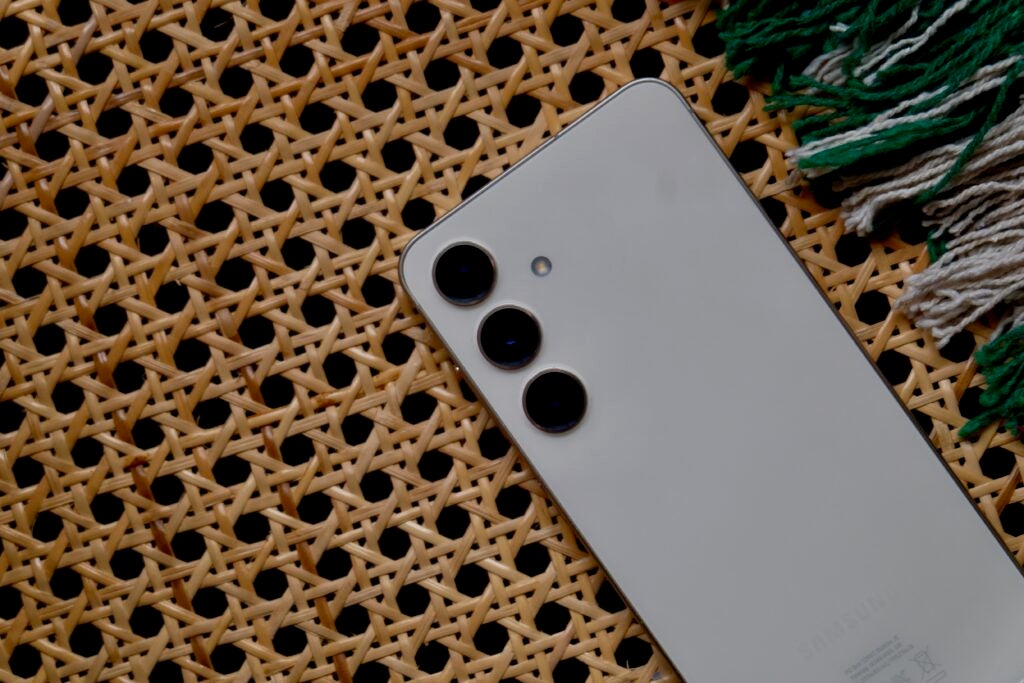
Considering there’s been so much advancement on the cameras used by Samsung for its Ultra phones – making the S24 Ultra easily one of the best camera phones on the market – it’s a shame that the optics have almost been completely forgotten about here. This is an £800/$800 phone after all.




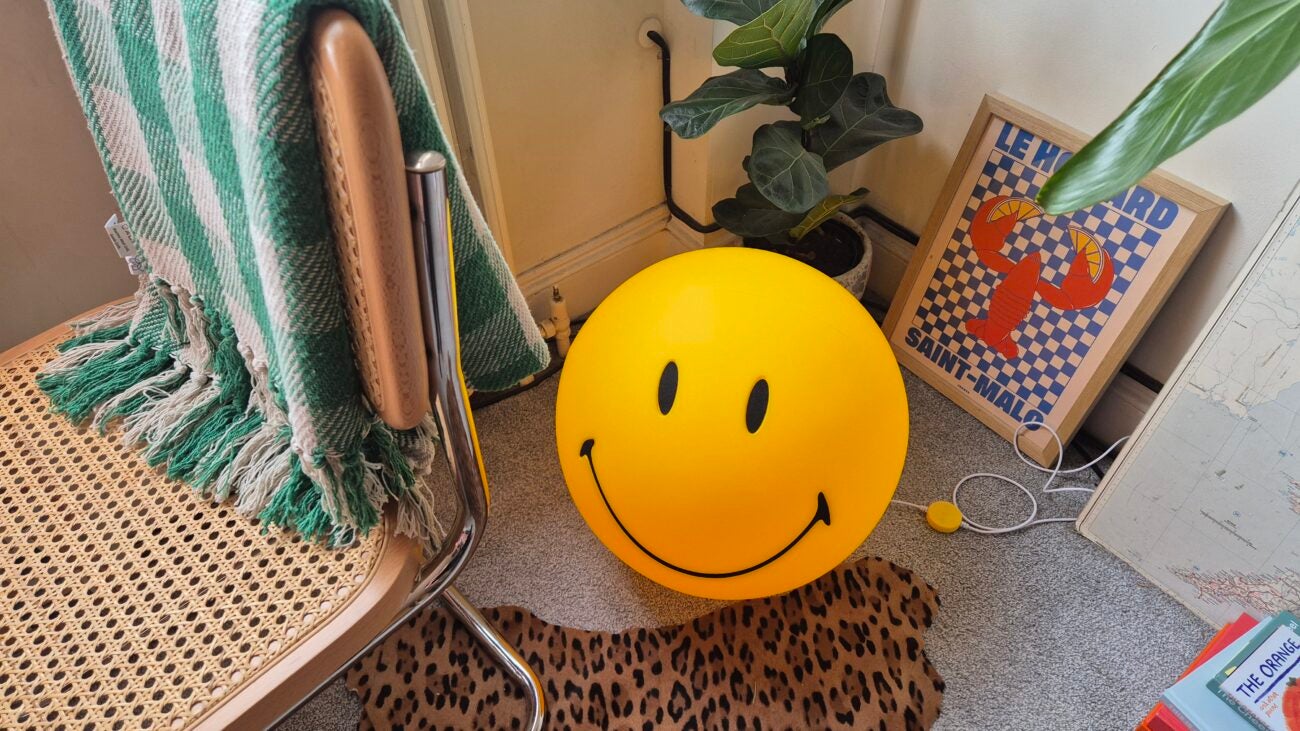
Phones available at only slightly higher prices, like the Pixel 8 Pro and OnePlus 12, offer far more complete camera systems and superior results, while I would also take the images and video from the cheaper Pixel 8 over those from the S24. Equally, on the iOS side, the iPhone 15 might lack a telephoto camera, yet it captures far better quality images and videos when compared to the S24.
Now, I am not saying the cameras here are bad, it’s just that competition has outpaced Samsung in this price tier to such an extent that the good camera here feels outdated. If you’re not comparing it to anything else on the market, however, the S24 does produce some nice-looking shots.



Predictably, the best results, whether that’s images or video, come from the main 50MP sensor. This is a versatile sensor that does well in various lighting conditions and generally produces pleasing shots that have bright, vivid colours made for social media. Detail can feel a little oversharpened at times, but that’s a traditional Samsung aesthetic many enjoy.
The telephoto lens lets you get closer to a subject without moving and it’s good for portraits. You can’t push it far without losing lots of details, but the results are still superior to digital zoom.


The ultrawide completes the trio, coming in handy for wide landscape shots. Both of these secondary sensors could do with packing higher-megapixel sensors and slightly better colour calibration with the main sensor.
Performance and Galaxy AI
- New handy GenAI-powered features
- Note transcription
- Exynos 2400 can compete with Snapdragon 8 Gen 3
Samsung would probably like everyone to think that the lack of notable hardware upgrades this year is offset by the advances in software, notably the huge focus on AI.
Galaxy AI makes itself apparent all over the S24, from the default keyboard to the phone app to, more predictably, the camera and gallery. We’re talking Pixel levels of AI skills, rather than some of the other Android devices in 2024 that merely feel like they are touching the surface.
I have both been impressed and disappointed by the Galaxy AI system so far. At times some of the skills it has, and the tasks it can accomplish, point towards a tempting new direction for smartphones. Other times I’m left feeling how limited AI remains, just wishing I had completed the task myself.
Let’s start with the positives because there are plenty of them. I love how Galaxy AI has been built into the Notes app, allowing it to transcribe meetings accurately and quickly. It can easily tell the difference between speakers too, and in my tests, the results were just as good as the Pixel’s excellent Recorder app.
The Notes app can then take that transcription and slice it up into proper bullet point notes, formatting texts and laying everything out in an easy-to-read manner. If you take a lot of meeting notes, you’re going to use this every time.
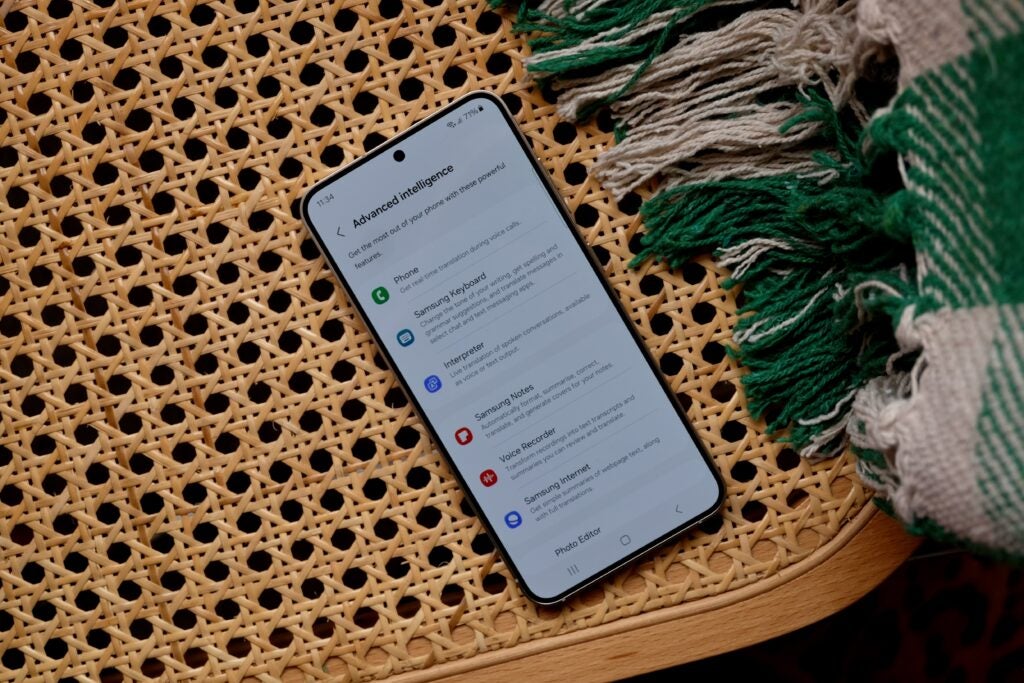
Another feature similar to the Pixel 8 is the generative AI photo editing skills. These can be hit-and-miss on the Galaxy S24. When it works, it looks great – someone annoying jutting into an otherwise Insta-worthy picture? No problem, just delete them. It’s quick and aside from sometimes replacing people with random bollards, you wouldn’t notice anyone has been brutally scrubbed from reality.
I am less impressed with the generative fill skills, which require an internet connection as opposed to being all done on the device. Changing the look of the sky, for example, feels like nothing more than a gimmick. Why would I want a picture of something that wasn’t real?
Another trick that Galaxy AI offers is the ability to rewrite text when you’re using the default Samsung keyboard. You can ask the AI to alter the tone of an email, for instance, if you think your original effort wasn’t formal enough. The AI-generated results, for me, still feel too stilted and are clearly not written by a real person – but then I often feel the same about anything written by an AI.
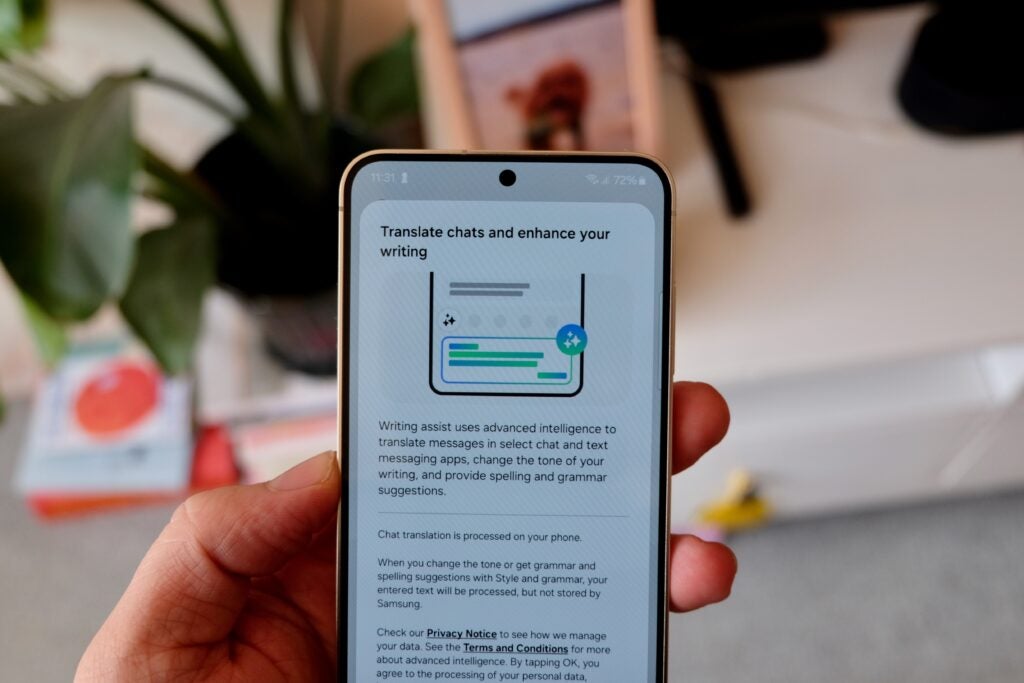
I’m equally disappointed with some of the phone call translation features, which are often so slow that they’re rendered utterly pointless.
Of course, the benefit of AI is that it is constantly evolving, so even these gripes could be fixed in the future. This feels like a good starting point, but there simply isn’t enough AI prowess here to warrant an update purely for the benefit.
Depending on which region you’re buying the phone in will determine which chipset sits inside. US buyers get the same Qualcomm Snapdragon 8 Gen 3 for Galaxy that is in the S24 Ultra, whereas those in European countries, including the UK, get Samsung’s own Exynos 2400. The Exynos model is what I was provided for review purposes.
That chip is paired with 8GB RAM (paltry on paper in 2024, but adequate in everyday use) and 128GB or 256GB of non-expandable storage. With phones like the OnePlus 12R offering up to 512GB of storage, maxing out at 256GB is a bit stingy. But Samsung wants you to know, if you want more space, that the S24 Ultra is right there with 512GB or 1TB options.
When the phones were initially announced, Samsung reps were keen to point out to me that, while the chips are different, they should perform on par. In my benchmarking tests, the Exynos seems to be a good chip, especially when paired with the 1080p display.
However, after testing a Snapdragon 8 Gen 3-equipped S24, the latter is certainly the more powerful of the two—especially when it comes to GPU performance, where Qualcomm leaves Samsung in the dust.
In everyday use, however, the Galaxy S24 is fast. It can handle intensive games with ease – whether or not you’d want to play Call of Duty Mobile on a screen this size is a different story – and aside from getting quite hot to the touch, I didn’t notice any negative issues when compared to a Snapdragon-powered phone.
Software
- Android 14
- OneUI 6.1 has handy new features
- 7 years of OS upgrades promised
Samsung’s OneUI 6.1 is a feature-rich skin packed with numerous customisation options. It’s great that you can now add multiple lock screen widgets, and the always-on display is better than ever. There’s a lot of bloatware, but I quite like Samsung’s apps and find them, especially the browser, arguably better than Google’s alternatives.
The overall design leaves a lot to be desired, though. There’s little to no style here, with ugly icons and childish visual elements everywhere. A complete design rethink is required here, especially with how slick Google’s interpretation of Android is in 2024.
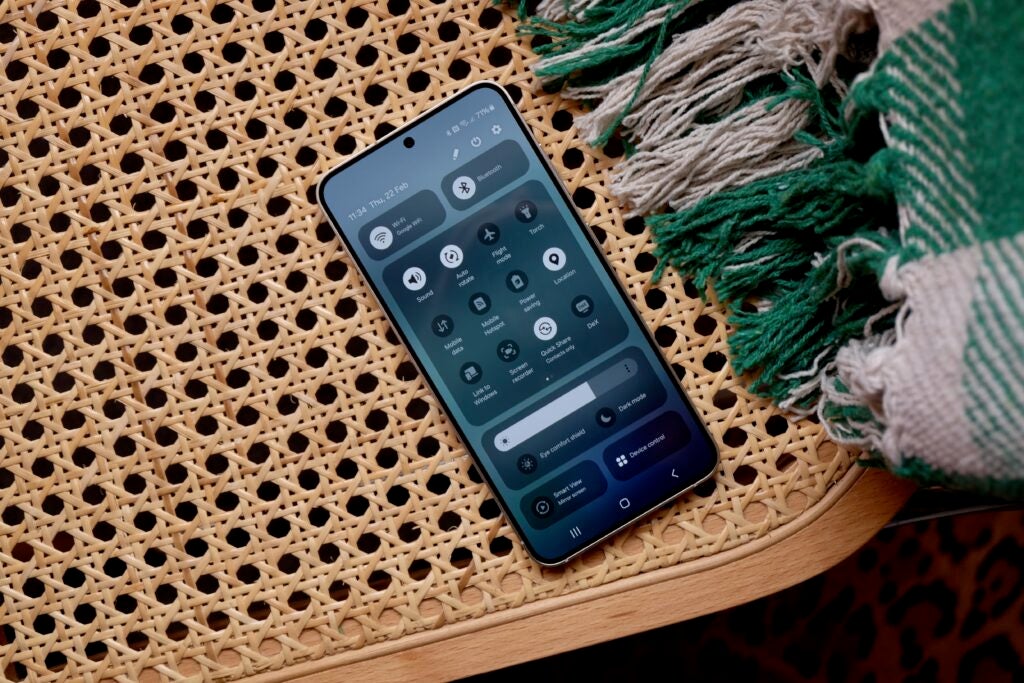
One thing I can’t knock Samsung for is its software upgrade promise. The company has said the S24 will get seven years of OS upgrades. That will take it through to Android 21. That allows Samsung to compete with Google and the Pixel 8, the first of the big players to offer the 7-year OS upgrade promise.
A longer upgrade promise instantly makes the large investment in a phone easier to swallow. Of course, it’s hard to say how well the phone will function in 7 years, but as long as those security updates keep arriving people are less likely to upgrade frequently and create more e-waste.
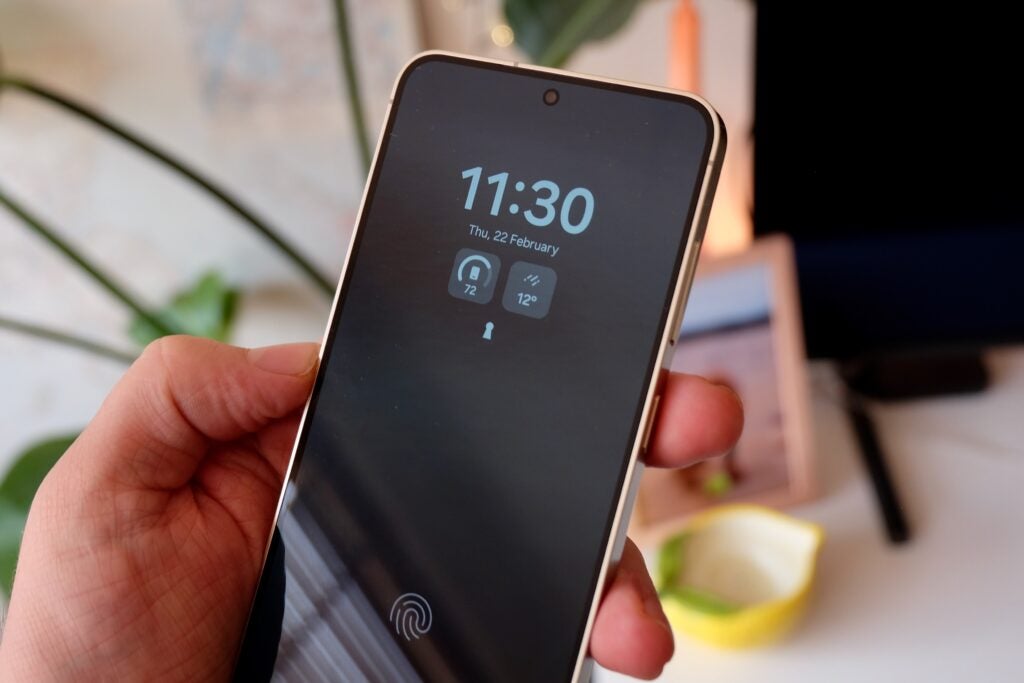
Battery life
- 4000mAh battery and 25W charging speeds
- Good endurance for a small phone
- Wireless charging is supported, but it’s slow
On a spec sheet, the Samsung Galaxy S24 looks to be seriously behind the competition when it comes to battery tech. Not only is the cell itself relatively small at 4000mAh (Android phones tend to be closer to 5000mAh in 2024) but the 25w maximum charging speeds are some of the slowest of any modern Android phones we’ve reviewed.
In reality though, the small 1080p screen and power-efficient display tech help make this a phone that can last a busy workday. It’s certainly not a two-day device, like the OnePlus 12R or S24 Plus, but then sacrifices in endurance have to be made when a phone is small.
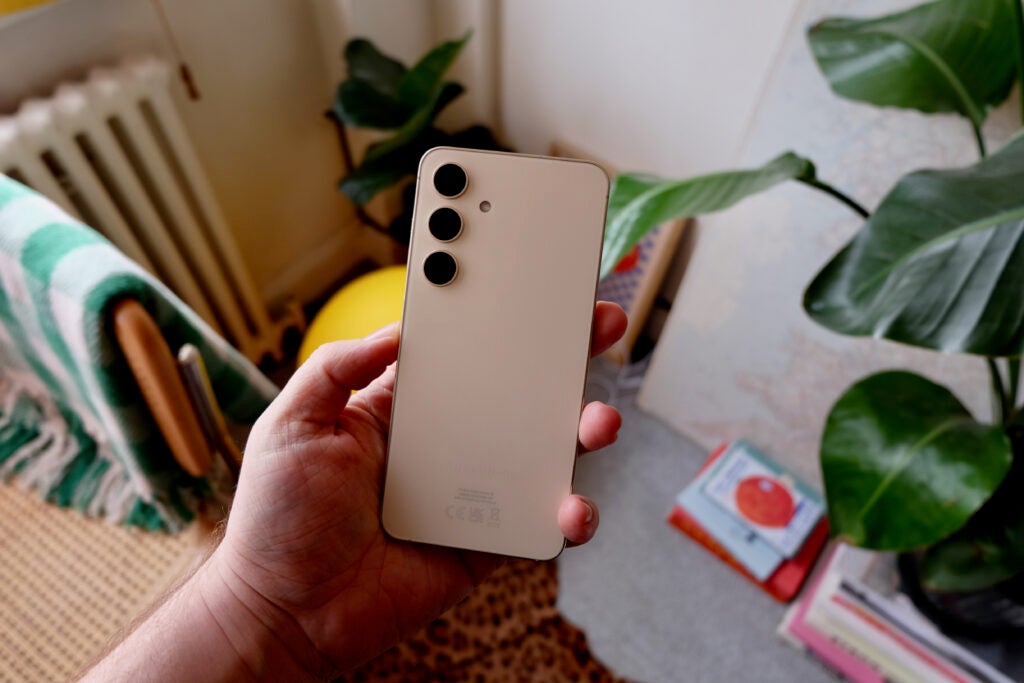
In my experience, I have typically managed to get 4-6 hours of screen time per charge – down from about 6-7 hours on the S24 Plus. On lighter days I was left with around 30% juice left when I was ready to plug in to charge for the night, which is slightly better than the Galaxy S23.
The small screen also helps reduce battery loss when streaming video. An hour of Netflix streaming took off just 4% – a much better result than we got on the S24 Plus.
There’s no way to tell yet whether the endurance on the S24 Qualcomm edition will be better or worse, but for a small phone with a small battery, the endurance here isn’t a reason to look elsewhere.
Having a 4000mAh battery also makes the 25w charging adequate. In my tests, the S24 can be charged from 0-50% in just over 30 minutes, with a full charge taking just shy of 80 minutes. Slow wireless charging completes the package.
These results match up closely with the 45w capable S24 Plus. Of course, it does pale in comparison to the 28 minutes it takes to charge the OnePlus 12R from 0-100%.
Latest deals
Should you buy it?
You should buy if you want a small, powerful Android phone
There isn’t much competition when we’re talking smaller Android phones. The Galaxy S24 packs plenty of power and features into a pocketable shell.
You shouldn’t buy if you want the very best Samsung experience
While the S24 is a good phone, it;s rather obvious Samsung has put more focus into the Ultra version. This is where the real upgrades sit, and the other S24 phones feel a little forgotten about as a result.
Final Thoughts
While it impresses in certain ways, the £799/$799 Galaxy S24 feels quite outdated in other areas. There are so many excellent Android phones on the market that have the S24 beaten for camera (the Pixel 8, for example) and display (the OnePlus 12 is only £50 more or the same price in $) that you’ve got to really like what Samsung is offering to plump for this.
It’s clear the focus of Samsung’s attention has been on the Ultra series. That’s where the screen, camera and design innovations end up, and for the most part, they rarely seem to trickle down to the more affordable options. The lack of camera changes with the Galaxy S24 is a real shame.
For the right person though, the Galaxy S24 can still be a great phone. The size is its main selling point, and it’s one of the few remaining Android phones that’s powerful and not massive. You are also getting 7 years of OS updates, far more than the likes of OnePlus, Xiaomi and Oppo offer. This is a phone that could last until Android 21 arrives, and that’s great news.
How we test
We test every mobile phone we review thoroughly. We use industry-standard tests to compare features properly and we use the phone as our main device over the review period. We’ll always tell you what we find and we never, ever, accept money to review a product.
Find out more about how we test in our ethics policy.
Used as a main phone for over a week
Thorough camera testing in a variety of conditions
Tested and benchmarked using respected industry tests and real-world data
That depends on which region you’re in. US buyers get the Snapdragon 8 Gen 3 for Galaxy, while those in the UK, Europe and other regions get the Exynos 2400.
Yes, it supports 25W charging. There isn’t a charger in the box.

